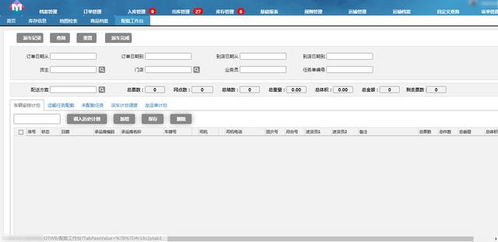
Understanding OMS Integration: A Comprehensive Guide for You
Are you looking to enhance your business operations with a robust Order Management System (OMS)? If so, you’ve come to the right place. In this detailed guide, we’ll delve into the various aspects of OMS integration, helping you understand its importance, benefits, and how to implement it effectively. Let’s get started.
What is OMS Integration?

OMS integration refers to the process of connecting your Order Management System with other business applications, such as CRM, ERP, and e-commerce platforms. This integration ensures seamless data flow, real-time updates, and improved efficiency across your business operations.
Benefits of OMS Integration

1. Streamlined Order Processing: By integrating your OMS with other systems, you can automate various order processing tasks, such as order entry, inventory management, and shipping. This not only saves time but also reduces errors and improves customer satisfaction.
2. Enhanced Inventory Management: OMS integration allows you to have real-time visibility into your inventory levels, ensuring that you always have the right products in stock. This helps prevent stockouts and overstock situations, ultimately saving you money.
3. Improved Customer Service: With OMS integration, you can provide your customers with accurate order status updates, faster shipping options, and personalized recommendations. This leads to increased customer satisfaction and loyalty.
4. Better Data Analysis: Integrating your OMS with other business applications enables you to gather and analyze valuable data, such as sales trends, customer preferences, and order fulfillment times. This data can help you make informed decisions and optimize your business operations.
Key Components of OMS Integration

1. E-commerce Platforms: Integrating your OMS with e-commerce platforms like Shopify, Magento, and WooCommerce allows you to manage orders, inventory, and customer data seamlessly.
2. CRM Systems: Connecting your OMS with CRM systems like Salesforce and HubSpot helps you maintain a unified view of your customers, enabling personalized marketing and improved customer service.
3. ERP Systems: Integrating your OMS with ERP systems like SAP, Oracle, and Microsoft Dynamics 365 ensures that your business processes are streamlined and efficient.
4. Shipping Carriers: Integrating your OMS with shipping carriers like FedEx, UPS, and DHL allows you to automate shipping processes, track packages, and provide real-time shipping updates to your customers.
How to Implement OMS Integration
1. Assess Your Needs: Before implementing OMS integration, it’s essential to assess your business needs and identify the systems you want to integrate. This will help you choose the right OMS and integration tools.
2. Choose the Right OMS: Select an OMS that meets your business requirements and offers seamless integration with other systems. Consider factors like scalability, ease of use, and customer support.
3. Select Integration Tools: Choose integration tools that can connect your OMS with other systems. Some popular options include Zapier, Integromat, and MuleSoft.
4. Plan Your Integration: Develop a detailed integration plan, including timelines, resource allocation, and testing procedures. This will help ensure a smooth implementation process.
5. Test and Deploy: Before going live, thoroughly test the integration to ensure that it works as expected. Once testing is complete, deploy the integration and monitor its performance.
Best Practices for OMS Integration
1. Data Security: Ensure that your OMS integration complies with data security standards and regulations. Implement encryption, access controls, and regular audits to protect sensitive data.
2. Scalability: Choose an OMS and integration tools that can scale with your business. This will help you avoid costly upgrades and maintain a seamless experience as your business grows.
3. Training and Support: Provide training and support to your team to ensure they understand how to use the integrated systems effectively. This will help you maximize the benefits of OMS integration.
4. Continuous Improvement: Regularly review and optimize your OMS integration to ensure it continues to meet your business needs. Stay updated with new features and technologies to keep your integration ahead of the curve.
By following these guidelines, you can successfully implement OMS integration and take your business to new heights. Happy integrating!




